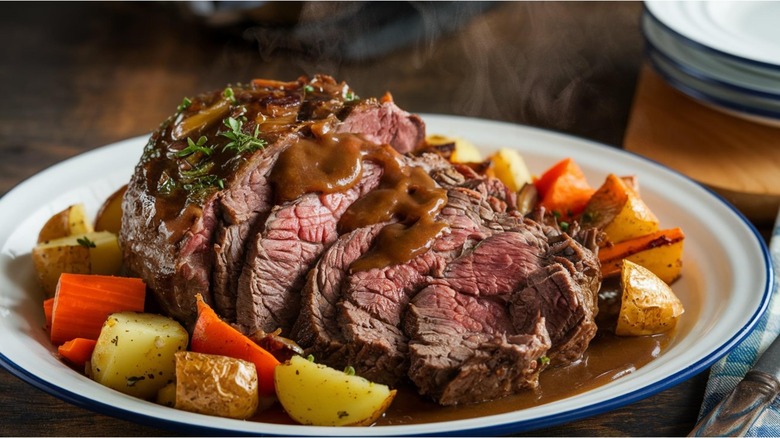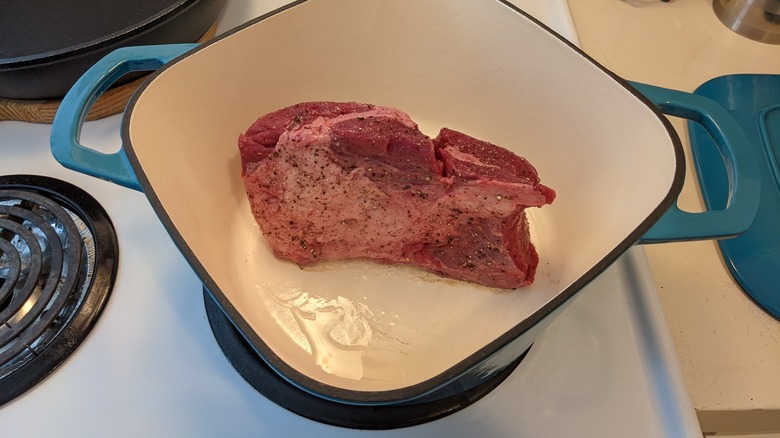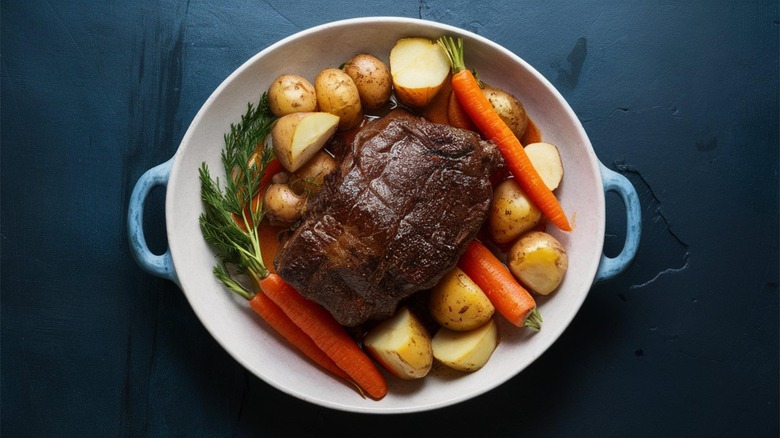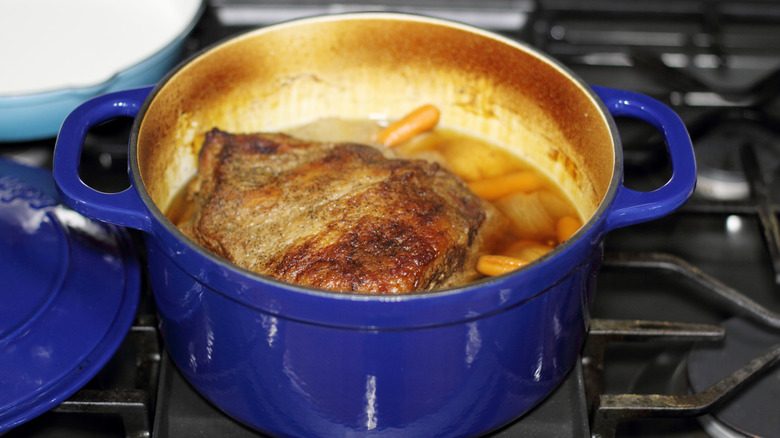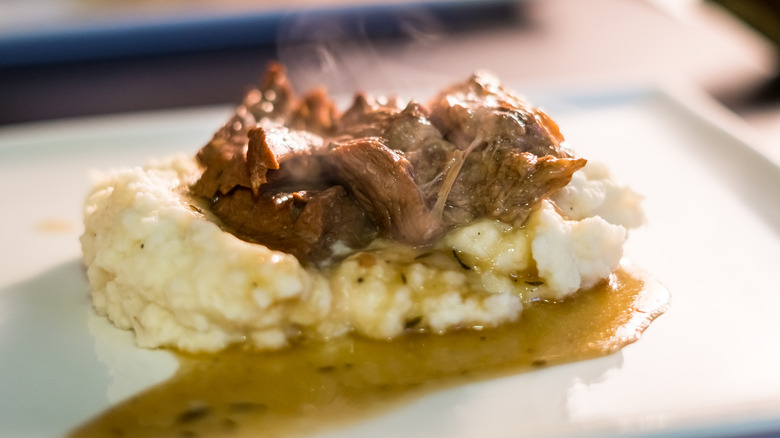Mistakes Everyone Makes With Pot Roast (And How To Fix Them)
A homemade pot roast is comfort food at its finest. When cooked low and slow, even tough cuts of meat become fall-apart tender and delicious. But there are always things you can do to make it even better. To find out more, Food Republic consulted chef, spice expert, and food entrepreneur John Politte, who revealed some of the most common mistakes people make — and how to prevent and fix them.
While a pot roast is all about the long braising, Politte stressed the importance of searing the meat first and offered advice on when exactly to season the food for the best results. The chef also shared some top tips on how to fix a pot roast that has become overly dry and restore the meat to its juicy best.
Even though you can choose inexpensive cuts for tender braised beef, such as chuck, brisket, or a beef round, it's still possible to get a huge amount of flavor and a great texture if you follow the right steps. Whether it's your first time making a pot roast or you're a home cook with a wealth of experience, Politte's tips can help you get tasty and meltingly tender meat as well as a rich, well-seasoned gravy.
Searing the meat is an essential step
While it may be tempting to just throw everything into the pot and let the low heat work its magic, it's essential to brown the meat first, according to chef John Politte. "Don't skip searing the meat for a better flavor," he advised. It's well worth spending the extra few minutes at the stove for a far superior end result, which not only tastes better but looks more appetizing, too.
The reason that searing the meat over a high heat is so effective is because it caramelizes the exterior of the protein — what's known as the Maillard reaction. This gives it a deeper flavor, and also leaves behind the little brown bits, called fond in culinary terms, which add even more of a rich beefy taste. Use the same pot for browning as for braising to maximize the flavor, and you can even use leftover beer for a hoppy, boozy pan sauce.
Check the seasoning at regular intervals
It's well worth seasoning your meat generously with salt and pepper on all sides before you sear it — a seasoning tip Bobby Flay swears by. But to avoid a flat-tasting or overly salty end result, it's worth keeping track of how the food tastes at various stages during the process, too, so you can adjust the flavors as necessary. "Check your seasoning throughout cooking; flavors deepen over time," advised John Politte.
If yours starts to taste a little lackluster, try adding some bold ingredients to upgrade your pot roast such as mustard, horseradish, or even cocoa powder. Or you can fix an excessively salty flavor by adding an acid such as lemon juice or tomato paste.
Lifting the lid will affect the cooking time
While a pot roast takes quite some time to cook, it's mainly hands-off. But if you're tempted to keep taking a peek to check how it's getting on, you're making a big mistake. "Avoid lifting the lid frequently; it releases heat and can extend the cooking time," explained chef Politte.
The lid is also essential for keeping in the moisture for a juicy piece of meat. So to avoid heat and moisture escaping from the dish, keep any lid-lifting to a minimum. While it's necessary to remove it at certain points — when checking the seasoning, for example — don't keep the lid off for more than around 30 seconds at a time if possible.
Fix a dry roast by adding broth or gravy
It's frustrating to spend hours slow-cooking a piece of beef only to end up with something that's dry and stringy rather than tender and juicy. Fortunately, there are ways to fix it. "If the roast turns dry, add a bit of beef broth or gravy to the meat and heat it gently on the stove or in the microwave to help moisten it," advised chef Politte. "Shredding the meat and mixing it with sauce can also help." This is the perfect time to use that fond and make a saucy gravy — with or without your favorite beer.
To prevent a dry pot roast in the future, make sure you've got enough liquid in the pot, and don't overcook it. If your piece of beef weighs less than three pounds, check it after a couple of hours. If it's bigger, then see if it's done in three hours. When it comes to leftovers, try using the residual heat of your oven to reheat roast beef without losing tenderness.

